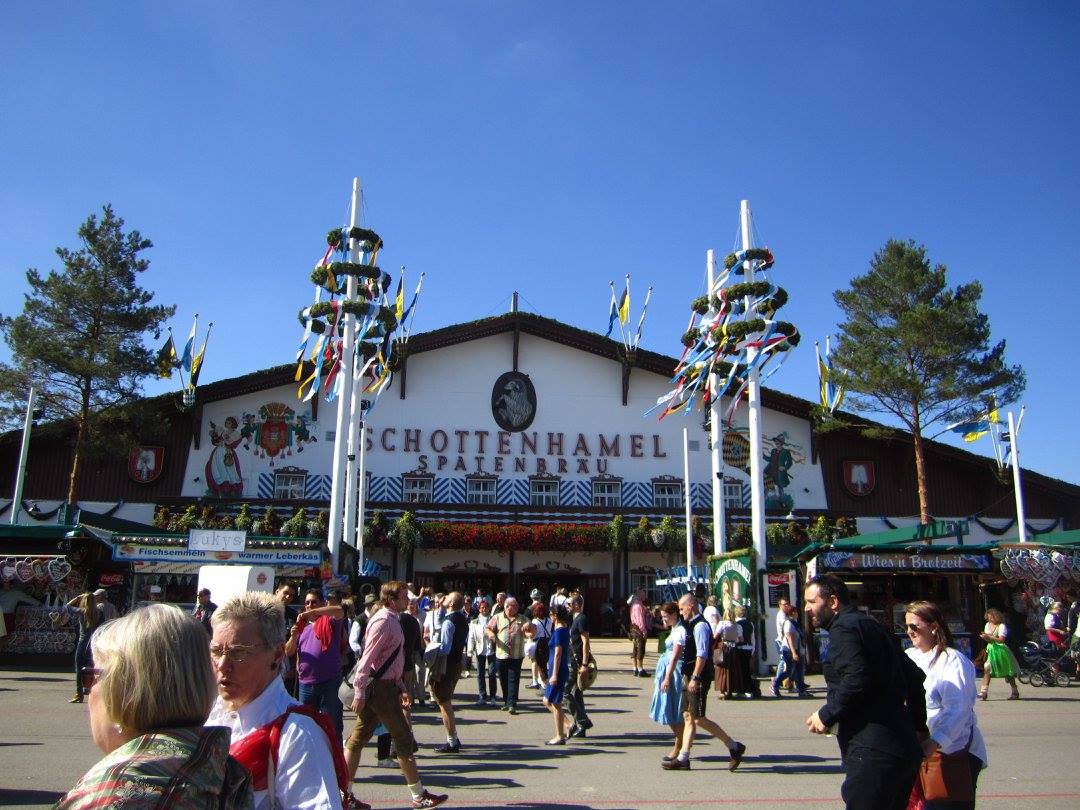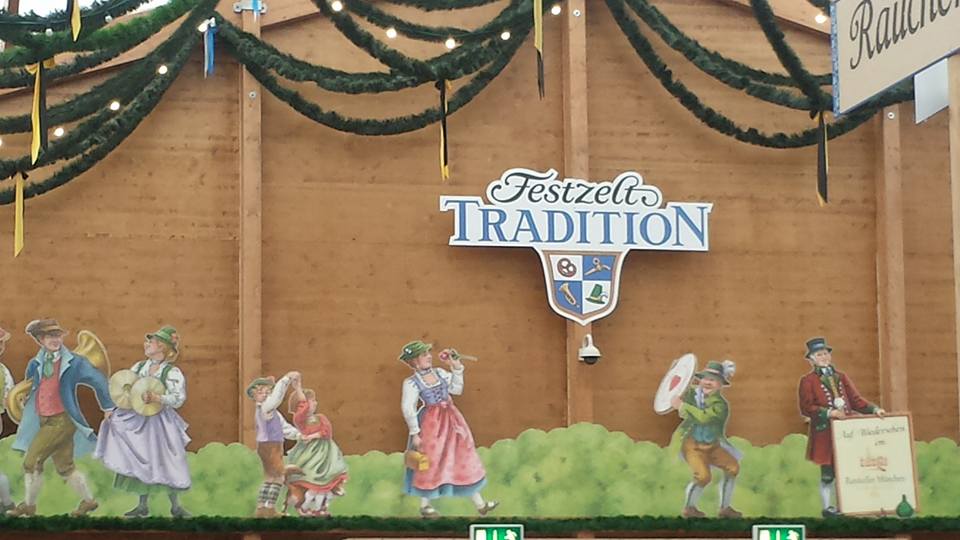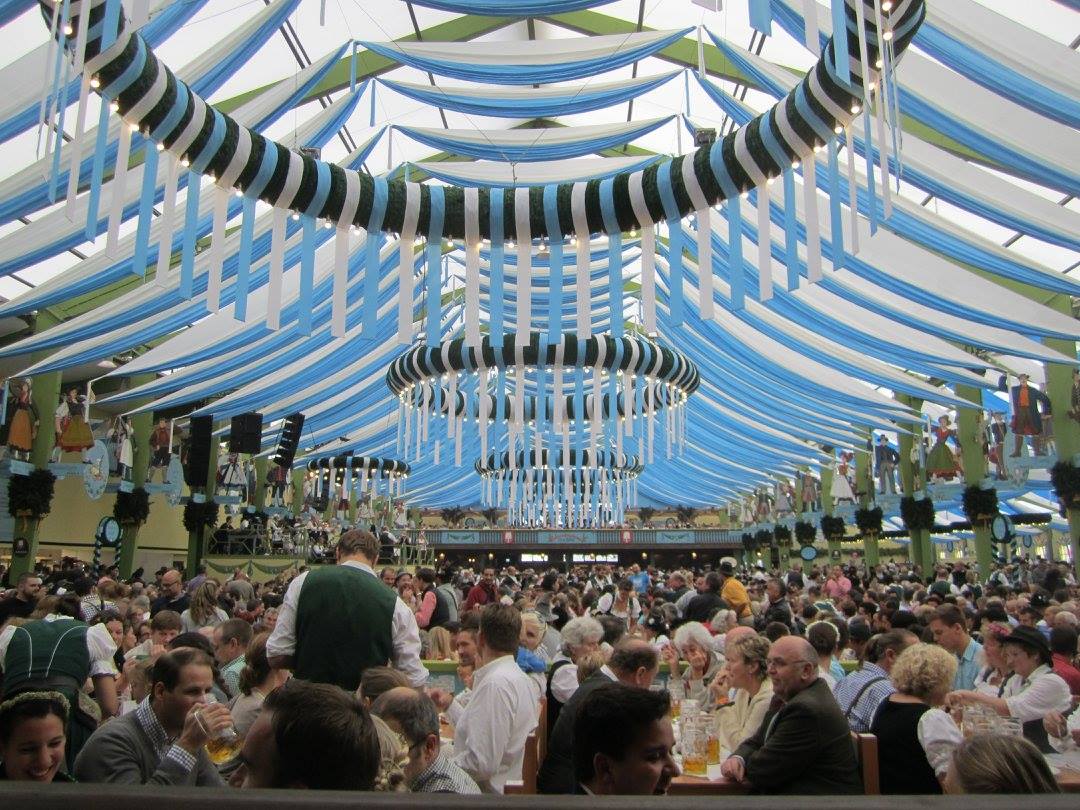Gemütlichkeit

You can’t possibly think that I would run a blog based on the alcoholic beverage industry and NOT do a post on Oktoberfest, would you?!
I’ve participated in all kinds of Oktoberfest festivities, from the Midwest backyard barbecue version to the “real deal” annual celebration in Münich.
Every one of them has been a blast; drinking malty beer, singing “Country Roads” too loudly 17 times, and making new friends.
And it really seems like the Oktoberfest idea has permeated the world in recent years (and by world… I mean the places I happened to have lived in the last decade or so. Let’s call it a mini sampling.) More and more towns are hosting their own festivals; with one simple Google, I found a list of 30+ Oktoberfests that are happening throughout Wisconsin in the span of a month!
And of course craft breweries are jumping on the train as well. It used to be that maybe you’d see a few additional, different imports show up on the liquor store shelves at this time, but now it seems like, “are you even a micro-brewery if you don’t release your own Oktoberfest with a clever name and badass can art?!”
Now, I don’t want to shut down the party and complain that we’re co-opting another culture’s autumn festival for our own beer-drinking gains, but I do think it’s important that you know how this all developed if you are to participate. Let’s at least understand the history, because I think might surprise you!

The Way, Way Back
I think the biggest reveal right off the bat, is that Oktoberfest did not start as a beer-drinking holiday. It wasn’t about beer, wasn’t about consumption of alcohol at all, and didn’t actually have food or drink booths on the fair site until eight years into its history.
And honestly, I think Germans today would argue that it still isn’t a beerfest, that’s just what most of the 6 million tourists that show up in Münich each year have decided they want to focus on.
But we’ll get back to that thought…
First, it actually started as wedding party! The first Oktoberfest was held on October 12, 1810 in celebration of the marriage of the crown prince of Bavaria (who later became King Louis I) to Princess Therese von Sachsen-Hildburghausen.
It was five days of festival-ing which concluded in a horse race. This was not the “traditional” way of celebrating a marriage, even in those days, but National Guard member Andreas Michael Dall’Armi must have been a wild dude, because he decided a horse race was the perfect way to start a marriage, and told the king his idea. Who then thought, “ah, yes of course, that makes perfect sense.”
So, a horse race it was. And in 1824 Andreas was awarded the first gold citizens medal by the City of Münich for ‘inventing’ Oktoberfest.
But, we know it didn’t stay as a horse race, thank goodness. Today, there is nary a horse to be seen, except the giant draft horses which pull the brewery parade wagons.
The very next year, in 1811, the public demanded another festival. Well, a wedding had already happened, and there were no more royals left to wed, so ownership was handed over to the Bavarian Agricultural Association. They decided it was a perfect place to showcase their own goods and wares, and thus it shifted into an agricultural state fair.
It wasn’t until 1818 that any food or drink at all were really introduced, and not until the late 20th century (I know, we jumped ahead there!) that the beer tents we associated with the festival today were first used.

The Middle-ish Back
It was 1881 - that is 70 full years past the inaugural party - when the first fire roasted chicken stand was first introduced, which of course is one of the now-traditional and must-have meals at the Münich Oktoberfest.
First comes food, then comes beer.
As for the beer halls, they were still small tents up through the late 1800s. Let’s look at Schottenhamel as an example. Schottenhamel today is the largest, and longest running of the beer halls, but in 1864 it was just a small tap stand with only 50 seats. It wasn’t until 1896 that it upgraded to be an 8,000 seat wonder! Michael Schottenhamel - who was the one to build and open this giant beer Mecca - was also the one who thought it would be funny at the time to invite the mayor of Münich to tap his first keg of the festival… well, now that’s an annual tradition that marks the start of the whole shebang!

It still took a while for the festival to grow into what we know today, and unfortunately, it wasn’t all smooth sailing, which shouldn’t be surprising considering the party is now over 200+ years old.
There has been numerous years where the festival has had to close its doors. Almost immediately after conception, in 1813, it was cancelled due to the Napoleonic Wars. Then, it was cancelled several times in the first half of the 20th century due to the two World Wars and the country’s following economic crisis. And of course, it was cancelled in both 2020 and 2021 due to the COVID crisis.
The Recent Back
But in 2022, the Theresienwiese grounds were re-opened and the festival welcomed a whopping 5.7 million people back to celebrate.
But that number - while massive - actually still is a decrease from the norm; 6 million is the common number of visitors, with 7 million being a good year.
Today, we have the 38 beer and food tents. 17 larger tents (the biggest being Schottenhamel which can seat up to 10,000 counting both indoor and outdoor seating) and 21 small to medium tents.
Each year, Oktoberfest continues to break new records from the quantity of beer consumed through to the amount of chicken devoured. And although going through 75,800 hectolitres (about 2 million gallons) of beer is super impressive, there has been a shift in recent years to remind folks how the folk festival started and what it’s really all about.

News flash: it’s not beer.
In 2010, to mark the 200th anniversary, in addition to the ‘regular’ Oktoberfest, a historical festival took place in the south part of Theresienwiese which was to remind festival-goers of the festival’s history.
Per Oktoberfest’s website:
In addition to a family-friendly program, a wealth of cultural activities and horseracing, from which the festival originated, were on offer. The ‘Oide Wiesn’ was so successful that it has taken place every year since — the inhabitants of Munich in particular immediately fell in love with their ‘Oide’. It only takes a year off if the Bavarian agricultural fair, which takes place every four years, happens to be on at the same time. The next time will be in 2024.

As much as beer and chicken are ridiculously tasty and drunk singing to “Ein Prosit” is a blast, it’s important to remember the real reason behind the season: Gemütlichkeit.
A German word meaning friendliness and cordiality, and used to convey the idea of a state or feeling of warmth, friendliness, and good cheer. (It’s like “hygge”, but German.)
That’s how the festival started, and that’s what we should keep at the center of it today. It’s about getting to know your neighbors, cultivating a sense of cosy belonging, and supporting communal solidarity.

Weekly Adventure
Honestly, I think we should go big this week; I want everyone to find the nearest Oktoberfest festival to them, AND GO.
It’s Fall, folks - go enjoy some cool weather, neighborhood fun, and malty beers! Gemütlichkeit to you all.
Cheers,
Molly
References
https://www.britannica.com/topic/Oktoberfest
https://www.oktoberfest.de/en/magazine/tradition/the-history-of-oktoberfest
https://www.oktoberfesttours.travel/oktoberfest-munich/beer-tents/schottenhamel/
https://www.merriam-webster.com/dictionary/gem%C3%BCtlichkeit
https://en.wikipedia.org/wiki/Gem%C3%BCtlichkeit
https://www.eater.com/23872728/oktoberfest-guide-munich-germany-beer-food